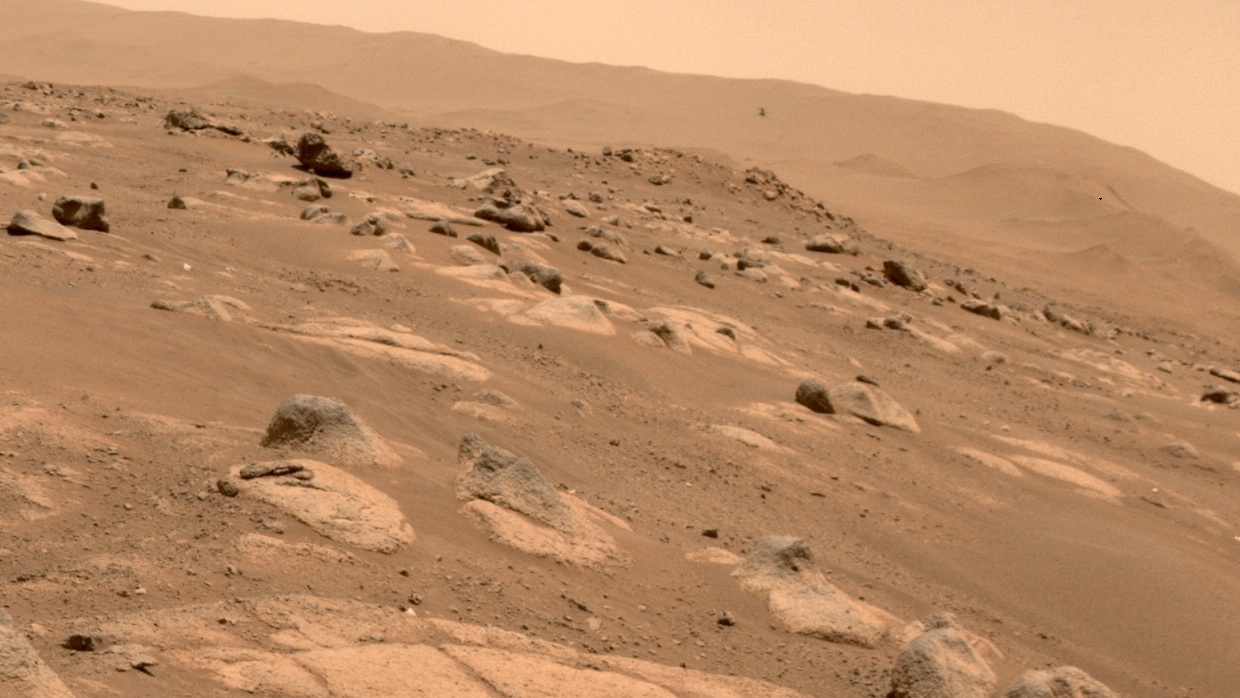On April 30th, 2021, the Ingenuity Mars Helicopter achieved yet another milestone and set new records with its fourth flight on Mars. This time around, the helicopter took off at 12:33 AM Mars Standard Time (10:49 AM EDT; 07:49 AM PDT) and ascended to an altitude of 5 meters (16 feet). It then traveled south for approximately 133 meters (436 feet) and then back in the space of about two minutes (117 seconds).
That makes for a round-trip of 266 meters (436 feet), which exceeds every flight Ingenuity has made so far – even its record-setting third flight. On that occasion, which took place on April 25th, Ingenuity flew 50 meters (164) feet in 80 seconds and reached a top speed of 7.2 km/h (4.5 mph). This set new records for both speed and distance over all of the helicopter’s previous flights, which took place on April 19th and April 22nd.
Ingenuity also captured lots of images during its latest flight with both its color camera and black-and-white navigation camera. This latter camera tracks surface features as it flies and the images it takes are typically used by Ingenuity’s flight controller. These are then thrown away unless the mission controllers decide that they are of particular value and store them for later use.
This built on what mission controllers did during the previous flights, where they snapped images in order to test the cameras and the helicopter’s ability to process them on board (some of which were kept for later). On this flight, the engineers saved even more images than in any of the previous flights: 60 in total. All of these were taken during the last 50 meters (164 feet) of flight as the helicopter was returning to its landing site.
Controlling an aircraft from Earth while it conducts extraterrestrial explorations presents some unique challenges for mission controllers, but also opportunities. Aside from providing them with another way of testing Ingenuity, they also present a perspective on Mars that humanity has never seen before. In all previous cases, photographs have been taken by rovers, landers, or orbiters – in short, from the surface or from orbit.
The mission controllers plan to use these latest images to learn more about the surface features and terrain within the Jezero Crater. Some of the black-and-white images were taken as stereo pairs, which will allow the team to test their ability to make 3D imagery of the surface. This work is especially exciting since the ability to resolve features in three dimensions will be a huge asset for future missions.
The same method could provide close-ups of terrain features that orbiters cannot, scout regions that are inaccessible to rovers, and even extend the reach of human explorer missions. Last, but not least, the mission controllers hope to use these images to study the elevation of different sites located beneath “Van Zyl Overlook,” where Persevarance’s is currently parked and serving as a communications base station.
The rover reached this spot after traveling roughly 330 meters (1080 ft) from where it set down on February 18th, 2021, which has since been named the Octavia E. Butler Landing. In the meantime, the mission team has plenty of data to analyze and is looking forward to more record-setting test flights. All told, they could not be happier with Ingenuity’s performance so far, which they describe as “letter-perfect.”
Further Reading: NASA

